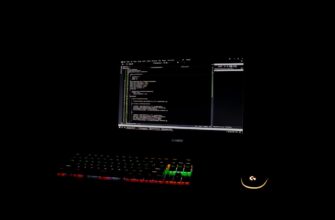- What Does “Crypto OB” Mean?
- How a Crypto Order Book Works
- Key Components of a Crypto Order Book
- Why Order Books Matter in Crypto Trading
- How to Read a Crypto Order Book
- Advanced Trading Strategies Using Order Books
- Limitations of Crypto Order Books
- Frequently Asked Questions (FAQ)
- What’s the difference between OB and chart analysis?
- Can order books predict crypto prices?
- Do all crypto exchanges use order books?
- How do whales manipulate order books?
- Is order book data free to access?
What Does “Crypto OB” Mean?
The term “Crypto OB” stands for Cryptocurrency Order Book, a fundamental tool in digital asset trading. An order book is a real-time, electronic ledger displaying all current buy and sell orders for a specific cryptocurrency pair (e.g., BTC/USDT) on an exchange. It reveals market depth, liquidity, and price discovery mechanisms by listing pending orders at various price levels.
How a Crypto Order Book Works
Exchanges aggregate buy (bid) and sell (ask) orders into the order book. When a trader places a limit order, it enters the OB until matched with a counterparty. Market orders execute immediately against existing OB orders. Key dynamics include:
- Bid Orders: Buy requests below current price
- Ask Orders: Sell requests above current price
- Spread: Gap between highest bid and lowest ask
- Market Takers: Traders executing against existing orders
- Market Makers: Traders adding liquidity via limit orders
Key Components of a Crypto Order Book
Understanding these elements is crucial for effective trading:
- Price Levels: Specific prices where orders cluster
- Order Size: Quantity of crypto at each price point
- Cumulative Depth: Total volume available above/below current price
- Time Priority: Older orders execute first at identical prices
Why Order Books Matter in Crypto Trading
Order books provide critical advantages:
- Transparency: Reveals true supply/demand dynamics
- Price Discovery: Determines fair market value through order matching
- Liquidity Assessment: Shows available volume for large trades
- Strategy Development: Informs scalping, arbitrage, and swing trading decisions
How to Read a Crypto Order Book
Follow this step-by-step approach:
- Identify the bid-ask spread (narrow spreads indicate high liquidity)
- Analyze order depth for support/resistance levels
- Watch for large wall orders that may manipulate prices
- Monitor order flow for sudden buy/sell pressure shifts
Advanced Trading Strategies Using Order Books
Professional traders leverage OB data for:
- Liquidity Sniping: Placing orders near large clusters
- Spread Capture: Profiting from bid-ask gaps as a market maker
- Breakout Confirmation: Validating price movements with volume spikes
- Spoofing Detection: Identifying fake large orders that vanish before execution
Limitations of Crypto Order Books
While invaluable, OBs have constraints:
- Exchanges may hide large “iceberg” orders
- Doesn’t show over-the-counter (OTC) trades
- Susceptible to wash trading on unregulated platforms
- Requires real-time analysis tools for effective use
Frequently Asked Questions (FAQ)
What’s the difference between OB and chart analysis?
Charts show historical price action, while order books display real-time pending orders for forward-looking insights.
Can order books predict crypto prices?
They indicate short-term price pressure but can’t predict long-term trends due to external market factors.
Do all crypto exchanges use order books?
Most centralized exchanges (CEX) like Binance use OBs, while decentralized exchanges (DEX) often employ automated market makers (AMMs).
How do whales manipulate order books?
By placing large fake orders (spoofing) to trigger stop-losses or create false support/resistance levels.
Is order book data free to access?
Basic OB data is free on exchange interfaces, but institutional traders use paid APIs for real-time depth analysis.








